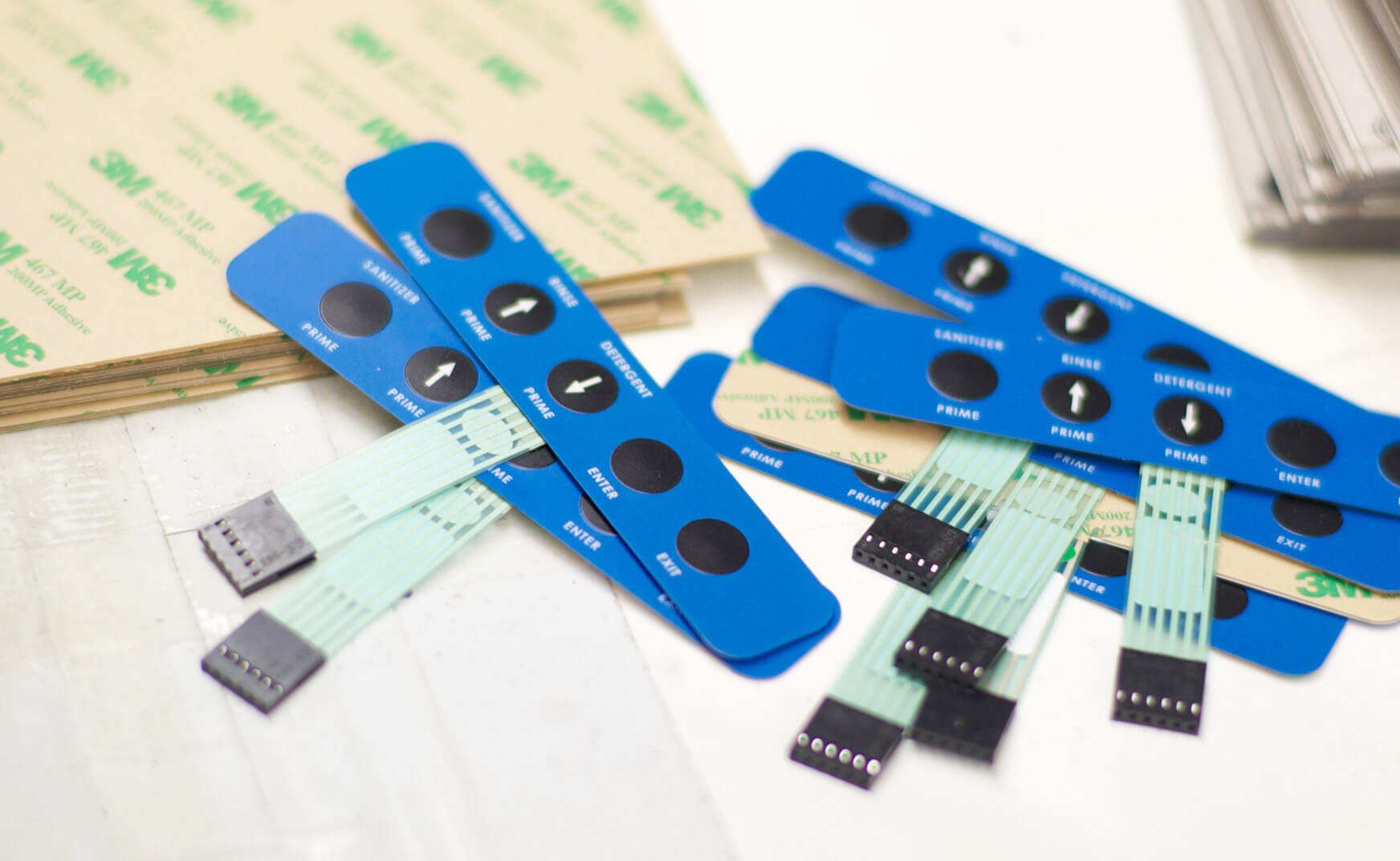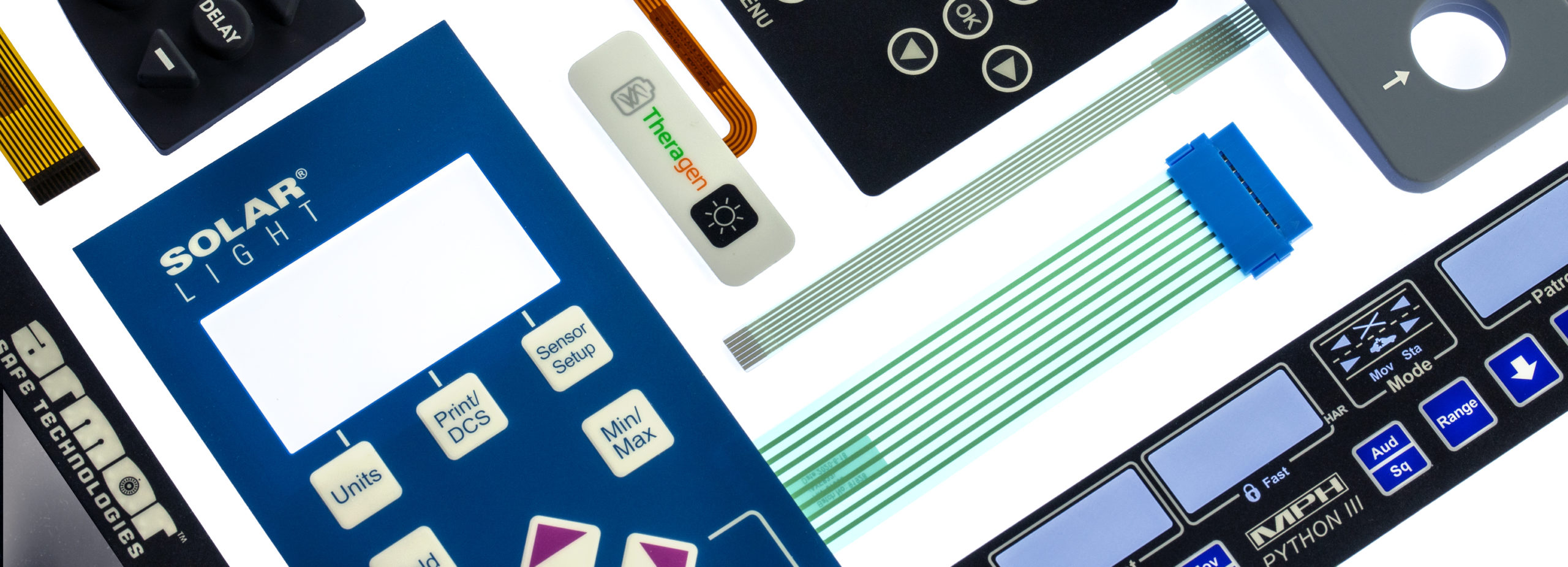An forward-thinking membrane switch manufacturer can offer modern features and materials.
An forward-thinking membrane switch manufacturer can offer modern features and materials.
Blog Article
All Regarding Membrane Layer Change: Understanding Its Style and Capability
When you assume about the control user interfaces in contemporary tools, membrane layer buttons commonly come to mind. Let's discover what collections membrane layer switches over apart from various other control systems.
What Are Membrane Layer Switches?

Membrane buttons can likewise be personalized regarding form, size, and graphics, permitting manufacturers to create special interfaces tailored to certain items. In general, membrane layer buttons play a substantial duty in improving individual experience throughout a large range of applications.
Just How Membrane Changes Work
When you push a trick on a membrane layer button, it turns on a straightforward yet effective mechanism. membrane switch manufacturer. The top layer, frequently made of adaptable material, presses down onto a conductive layer under it.
You'll see that the tactile responses varies based upon the switch style, using either a soft click or an extra pronounced action. When you launch the key, the membrane layer returns to its initial placement, resuming the circuit and stopping the signal. This process occurs almost instantaneously, ensuring a receptive individual experience.
Membrane layer buttons are prominent as a result of their sturdiness and resistance to dust and moisture, making them perfect for different applications, from house home appliances to clinical gadgets. Understanding this procedure helps you value their widespread use.
Key Elements of Membrane Layer Switches
Recognizing the crucial parts of membrane layer buttons is fundamental for comprehending their capability and design. The protective layer guards versus environmental variables and use, expanding the switch's life-span. By understanding these components, you'll obtain understanding right into exactly how membrane layer changes operate and their importance in different applications.
Materials Used in Membrane Switch Layout
The performance and resilience of membrane layer switches heavily depend on the materials utilized in their design. You generally experience polyester and polycarbonate as main substratums due to their exceptional strength and flexibility. These materials resist scrapes and chemicals, making them perfect for requiring atmospheres.
The conductive layers usually utilize silver or carbon, selected for their dependability and conductivity. membrane switch manufacturer. Silver supplies remarkable efficiency, while carbon is an economical choice. For the overlay, you may take into consideration a matte or glossy surface, relying on your visual requirements and individual experience
Adhesives play an important role also; they bond layers firmly and guarantee durability. Make particular to pick adhesives that stand up to environmental variables like temperature and humidity. Do not ignore the value of an excellent printing strategy for graphics, as it improves both functionality and visual charm. Selecting the ideal products will certainly assure your membrane layer switch stands the test of time.
Design Factors To Consider for Membrane Layer Buttons
While making membrane buttons, it's vital to think about various aspects that influence their performance and individual experience. Beginning by concentrating on the layout and switch size; make sure they're user-friendly and very easy to navigate. Take you could look here into consideration the tactile responses you wish to provide-- will customers need a noticeable click or a softer touch? Furthermore, think concerning the products you'll utilize, as they'll affect sturdiness and aesthetics.
Verify your style suits environmental variables, like wetness or temperature variations, which might affect performance. By meticulously thinking about these aspects, you'll develop a membrane button that improves usability and complete satisfaction.
Applications of Membrane Layer Switches
Membrane switches are functional elements found in numerous applications, from industrial tools to consumer electronics. You'll see their impact in machines that call for durable interfaces and in tools that gain from sleek layouts. Understanding these applications aids you value the functionality and usefulness of membrane layer buttons in everyday modern technology.
Industrial Devices Use
When you're wanting to improve the performance of industrial equipment, membrane switches supply a dependable solution that incorporates toughness with straightforward design. These switches are perfect for extreme atmospheres, giving resistance to dust, dampness, and chemicals. You'll discover them in control panels for manufacturing makers, HVAC systems, and medical tools, where precision and view it responsiveness are important. Their reduced profile suggests they fit perfectly right into numerous tools, saving important space while keeping ease of usage. With customizable graphics and backlighting choices, you can develop an instinctive interface for drivers, enhancing efficiency and that site safety and security. Plus, their long life expectancy decreases maintenance expenses, making them a clever financial investment for your industrial applications. Welcome membrane switches to improve your procedures and improve general performance.
Consumer Electronic Devices Combination
In the domain name of customer electronic devices, membrane switches play a vital duty in improving customer communication and tool functionality. Membrane layer switches additionally assure longevity and resistance to dust and moisture, expanding the life expectancy of your electronics. By picking membrane layer switches, you boost not just the capability however also the design of your devices, making everyday communications smooth and satisfying.
Benefits and Drawbacks of Membrane Buttons
While membrane switches use a variety of benefits, they likewise come with some downsides that you need to take into consideration. One substantial advantage is their compact layout, making them excellent for space-constrained applications.

Membrane buttons can have a much shorter life expectancy compared to mechanical buttons, especially under heavy use. They can additionally be much less responsive, which could affect user feedback throughout procedure. Stabilizing these pros and cons will aid you figure out if membrane layer buttons are the right fit for your job.
Frequently Asked Inquiries
For How Long Do Membrane Switches Over Typically Last?
Membrane layer switches generally last between 5 to ten years, depending upon usage and environmental problems. You'll wish to assess factors like wear, direct exposure to moisture, and temperature level fluctuations to evaluate their long life successfully.
Can Membrane Changes Be Custom-made for Particular Designs?
Yes, you can tailor membrane buttons to fit details designs (membrane switch manufacturer). You'll have the freedom to pick shades, shapes, and layouts that match your job's requirements, ensuring they mix seamlessly with your general visual
What Is the Price Range for Membrane Layer Switch Manufacturing?
The price variety for membrane button manufacturing usually drops between $1 and $10 each, depending upon aspects like design intricacy, amount, and materials. You can get quotes from makers to discover the ideal choice.

Are Membrane Layer Switches Over Water Resistant or Immune?
Membrane layer switches can be made to be water-proof or resistant, depending on products utilized and building approaches. If you require them for wet atmospheres, ensure you specify those requirements during the design procedure.
Exactly How Do Membrane Changes Compare to Typical Switches?
Membrane layer buttons are generally thinner and extra adaptable than standard buttons, providing a streamlined style. They're often simpler to clean and integrate, but may not provide the responsive responses you're made use of to with mechanical choices.
Final thought

Report this page